According provided by Nikon ED AF-S Nikkor 70-300mm 1: 4.5-5.6G VR IF SWM lens is huge thanks to the store www.fotika.com.uawhere you can find a huge number of different used photographic equipment, including similar lenses.
Nikon ED AF-S Nikkor 70-300mm 1: 4.5-5.6G VR IF SWM (short for Nikon 70-300 VR) is the classic telephoto zoom lens for Nikon FX full-frame cameras. Such zooms are in great demand for a wide range of photographic tasks. In 2006, Nikon 70-300 VR replaced the older model. Nikon ED AF Nikkor 70-300mm 1: 4-5.6D and for some time it was produced along with an add-on lens Nikon AF Nikkor 70-300mm 1: 4-5.6G. At the time of writing this review (summer 2015), the Nikon 70-300 VR is the only manufactured native telephoto lens of its kind. I think the Nikon 70-300 VR is the best option for anyone who does not want to mess with the more expensive and heavy professional class telephoto lenses of the 70 (80) -200 / 2.8.
All Original Similar Nikon FX Telephoto Lenses
Below is a list of all Nikon Nikkor telephoto lenses without high aperture and with auto focus support:
- Nikon AF Nikkor 70-210mm 1: 4, 1986-1987
- Nikon AF Nikkor 70-210mm 1:4-5.6, 1987-1993
- Nikon AF Nikkor 75-300mm 1:4.5-5.6, 1989-1998
- Nikon AF Nikkor 80-200mm 1:4.5-5.6D, 1991-1999
- Nikon AF Nikkor 70-210mm 1:4-5.6D, 1993-2000
- Nikon AF Micro Nikkor 70-180mm 1: 4.5-5.6D ED, 1997-2005
- Nikon AF Nikkor 75-240mm 1:4.5-5.6D, 1999-2000
- Nikon AF Nikkor 70-300mm 1:4-5.6D ED, 1998-2006
- Nikon AF Nikkor 70-300mm 1:4-5.6D, 1998-2006 (?)
- Nikon AF Nikkor 70-300mm 1:4-5.6G, from 2000 to 2014, black or silver
- Nikon AF S Nikkor 70-300mm 1:4.5-5.6G ED VR IF SWM, from 2006 to 2017
- Nikon AF S Nikkor 70-200mm 1: 4G ED SWM VR IF N Nano Crystal Coat, from 2012 to the present day
- Nikon AF-P Nikkor 70-300mm 1:4.5-5.6E VR ED, 2017 to present
The names of the lenses are indicated according to their spelling on the case.
Main technical characteristics of Nikon ED AF-S Nikkor 70-300mm 1: 4.5-5.6G VR IF SWM:
| Review Instance Name | Nikon ED AF-S Nikkor 70-300mm 1: 4.5-5.6G VR IF SWM Ø 67 made in Thailand US2603898 |
| Basic properties |
|
| Front Filter Diameter | 67 mm, plastic thread for filters |
| Focal length | 70-300 mm EGF for Nikon DX cameras is 105-450 mm |
| Zoom ratio | 4.3 x |
| Designed by | for digital cameras Nikon FX |
| Number of aperture blades | 9 rounded petals |
| Tags | focusing distance in meters and feet, focal lengths for 70, 100, 135, 200, 300 mm, bayonet mount mark, hood mount mark, mark for working in the infrared spectrum |
| Diaphragm | 70 mm from F / 4.5 to F / 32. At 300 mm from F / 5.6 to F / 40. The lens does not have an aperture ring (G - lens type) |
| MDF (minimum focusing distance) | 1.5 m over the entire range of focal lengths, maximum magnification ratio 1: 4 |
| The weight | 745 g |
| Optical design | 17 elements in 12 groups. The circuit includes 2 low dispersion element (shown in yellow in the optical diagram). The presence of such elements is indicated on the case with the abbreviation 'ED'. The red frame indicates the lenses included in the stabilizer.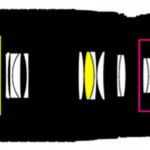 The image of the optical circuit is clickable. The image of the optical circuit is clickable. |
| Lens hood | Nikon HB-36 |
| Manufacturer country | Made in thailand |
| Period | From August 9, 2006 to July 11, 2017. Subsequently replaced by Nikon VR ED AF-P NIKKOR 70-300mm 1: 4.5-5.6E. |
| Instruction (multilingual) | Download, mirror 1 |
| Price |
In 2012, a more advanced model of this telephoto lens came out - Nikon N AF-S Nikkor 70-200mm 1: 4G ED SWM VR IF Nano Crystal Coat.
Assembly
All Nikon 70-300 VR lenses come from Thailand. To the touch the lens is quite pleasant and weighty, its weight is a little more than 700 grams. On cameras Nikon D700 и Fujifilm FinePix S5 Pro its weight does not cause any discomfort.
Nikon 70-300 VR uses 67 mm standard filters. The zoom ring is very wide, rubberized and comfortable, it’s much more convenient to rotate it than, say, the model Nikon 28-300mm 1: 3.5-5.6G VR... The focusing ring is plastic. Nikon 70-300 VR has metal bayonet mount. Almost the entire outer rim of the case is made of plastic. The retractable frame of the case consists of one section and is quite durable to the touch. As for the amateur lens, the Nikon 70-300 VR has good build quality. At one time, I used the Nikon 70-300 VR for a year, and at the same time, the lens did not begin to suffer from the spontaneous extension of its trunk.
There is a mark on the case for quick installation of the hood. The lens uses a plastic hood HB-36, which is fixed in special grooves located near the front lens of the lens. The hood can be installed in the opposite direction for transportation. In this position, it is somewhat inconvenient to use the zoom. While changing the focal length, the lens hood moves with the trunk of the lens.
On the bayonet side, the lens has a special rubber gasket, which serves to protect the lens from dust and moisture. On official sources, accurate confirmation that the Nikon 70-300 VR is a dustproof and waterproof lens cannot be found. At the same time, I am inclined to believe that because of this rubber seal, the lens still has at least some basic dust protection.
When changing the focal length, the rear lens moves in the middle of the lens body like a pump - it draws in and pushes out air. This behavior of the rear lens is called 'vacuum cleaner effect', which can increase the amount of dust that accumulates in the camera. It is funny that when zooming from 70 to 100 mm, the rear lens does not move, the movement occurs only in the range from 100 to 300 mm.
Diaphragm
Diaphragm lens consists of 9 rounded petalsthat form a smooth hole. The aperture range is available from F / 4.5-5.6 to F / 32-F / 40. Unfortunately, compared to the previous version of the lens - Nikon ED AF Nikkor 70-300mm 1: 4-5.6D, the new Nikon 70-300 VR has lost some of its aperture and now uses F / 4.5 instead of F / 4, which is about 1.27 less.
There are marks with a focal length on the zoom ring, the following is a list with the minimum numbers F available for these marks:
- 70 mm - F / 4.5
- 100 mm - F / 4.5
- 135 mm - F / 4.8
- 200 mm - F / 5.3
- 300 mm - F / 5.6
Stabilizer
The Nikon 70-300 VR has a VR stabilizer (Vibration Reduction), which according to the instructions can compensate up to 4 stops by shutter speed. In numerical terms, this means that you can shoot at shutter speeds 16 times longer than what a lens without a stabilizer requires. The stabilization system of the Nikon 70-300 VR refers to second generation (VR II).
The instructions for the Nikon 70-300 VR lens indicate 4 stops (Nikon measurements), and on the official website only 2.5 stops (measured by CIPA). In any case, the stabilizer works well.
To enable / disable the stabilizer on the lens there 'VR ON / OFF' switch. There is a 'Normal / Active' switch to select a mode. The stabilizer can operate in two modes: 'Normal' and 'Active'.
- 'Normal' mode designed for most scenes and avoids movement when camera shake. Theoretically, the 'Normal' mode can still track the movement of the camera to create panoramas.
- Active Mode most suitable for shooting when the camera can not only shake, but also move in different directions. Most often, it is advised to use this mode when shooting in motion.
I managed to take pictures of stationary objects, without blur and hard work, at 300 mm focal length and 1/40 second. The stabilizer works well, but it does not compare with the stabilizer in newer models, such as Nikon 70-200 / 4G.
When the stabilizer is working, the image in the viewfinder can jerk, this is due to the methodology of the vibration reduction system, which tries to keep the picture without stirring, but when the lens deviates greatly from the 'target', the stabilizer abruptly switches to a new scene. During its operation, the stabilizer creates a barely audible hum.
Focusing
Nikon 70-300 VR focuses quietly enough thanks to 'SWM'-motor (Silent Wbird Motor - quiet wave motor) and refers to the lens'AF S'type (with built-in motor focusing), and therefore it will automatically focus on any Nikon digital SLR camera.
The minimum focusing distance is 1.5 meters, while you can shoot Macro with 1: 4.5 magnification. Nikon Nikon 70-300 VR has a window with a scale of distances in meters and feet. There is no IPIG scale, but there is a mark for 70 mm focal length for working in the infrared spectrum. In the instructions, you can find deviations during photography in the infrared spectrum and for other values of the focal length.
Nikon 70-300 VR focuses fast. Focusing speed does not cause any complaints, although inferior to more expensive lenses. On cameras Nikon D700 and and Fujifilm FinePix S5 Pro the lens focuses tenaciously (does not lose objects from the zone of sharpness). Only sometimes, at 300 mm of focal length, the lens and camera try to refocus.
During focusing, the front and rear lenses remain stationary, as the lens uses internal focusthat is indicated on the case by the letters'IF'-'Iinternal Focus' - 'Inner Focus'. During zooming, the front lens leans forward but does not rotate. Thus, it is possible to use any filters without problems, for example polarizing or gradient.
On the lens housing you can find focus switch 'M / A - M'. In the 'M / A' position, auto focus works with constant manual focus priority. The 'M / A' mode is very convenient and useful - for manual focusing or focus correction, you do not need to additionally switch the lens to the 'M' mode. As soon as you start focusing manually using the 'M / A' mode, the auto focus is immediately turned off, and the lens continues to listen to your hands until you press the focus activation button again.
The focus ring rotates to 180 degreesManual focus is easy.
Nikon 70-300 VR suffers greatly from the 'Focus Breathing' effect - changing the viewing angle when focusing.
Compatibility and Features
The lens will work correctly at all Nikon digital SLR cameras.
When using the built-in flash, especially with the lens hood installed, photos may have a black shadow.
EGF lens for Nikon DX cameras is 105-450mm. An analogue of the Nikon 70-300 VR for Nikon DX cameras can be considered Nikon DX AF-S Nikkor 55-200mm 1: 4-5.6G ED VR IF SWM and Nikon DX AF-S Nikkor 55-200mm 1: 4-5.6G ED VR II. This Nikon 70-300 VR works wonderfully on cropped cameras and does not cause much inconvenience due to recalculation EGF. In the case of telephoto lenses crop factor Nikon DX cameras in most cases only benefit.
A list of all Nikon DX series lenses can be found. here. The optical design of all Nikon DX lenses can be viewed here.
Who should use such a lens?
The lens is suitable for everyone to shoot from afar. Due to the fact that the Nikon 70-300 VR is weak aperture, you can shoot moving objects only in good light. The stabilizer does not help when shooting moving objects, it only compensates for the jitter and movement of the camera and lens. With the Nikon 70-300 VR, you can easily capture wildlife. The lens is suitable for anyone who needs a good telephoto lens.
If you need an even longer telephoto lens, you can look at an old, but not very expensive Nikon ED AF VR-Nikkor 80-400mm 1: 4.5-5.6D Vibration Reduction.
Image quality
In general, the Nikon 70-300 VR creates a pretty high-quality picture.
On open apertures, the lens is sharp in the center in the range of 70-200 mm, in the range of 200-300 mm, the sharpness is slightly worse. Also noticeable drop in sharpness at the corners and edges. If you cover the aperture, the sharpness becomes a level higher.
Chromatic aberrations well fixed. Also, the freezing is well corrected (the color of the contrast zones of blur in green and purple). Visually, in real photos, distortion it’s hard to notice, at the same time, the Nikon 70-300 VR is still small distortion there is. The lens behaves well in side and backlight, which is not surprising for a dark zoom lens
Nikon 70-300 VR blurs the background well when shooting portraits and has a nice hips. Boke even on covered diaphragms it remains quite pleasant.
You can download RAW source files at this link (26 files in the '.RAF' format, 354 MB). All photos are on-camera JPEG. All photos were shot on Fujifilm FinePix S5 Pro without using a hood.
My experience
I tried all the native budget autofocus telephoto lenses for full-size cameras (everything except Nikon AF Nikkor 75-240mm 1: 4.5-5.6D) and I think that the Nikon 70-300 VR is the best among them, although it costs much more than its brothers without an image stabilizer .
If there is no money for the Nikon 70-300 VR, then among the low-end counterparts deserves due attention Nikon ED AF Nikkor 70-300mm 1: 4-5.6D и Tamron LD DI AF 70-300mm 1: 4-5.6 Tele-Macro (1: 2)as well as a good but more expensive Tamron DI SP 70-300mm F / 4-5.6 VC USD A005NII.
Prices
Real prices for Nikon ED AF-S Nikkor 70-300mm 1: 4.5-5.6G VR IF SWM lens see here, or in the price block below:
All 70-300 Class Full Frame Lenses with Stabilizer
Sigma
- Sigma DG OS 70-300mm 1: 4-5.6 (for Sigma SA, Sony A, Nikon F, Pentax K, Canon EF / EF-S)
Tamron
- Tamron DI SP 70-300mm F / 4-5.6 VC USD A005 (for Nikon F, Canon EF / EF-S, Sony A)
Canon (EF, EF-S)
- Canon Zoom Lens EF 75-300mm 1: 4-5.6 IS USM
- Canon Zoom Lens EF 70-300mm 1: 4-5.6 IS USM
- Canon Zoom Lens EF 70-300mm 1: 4-5.6 IS II USM (NanoUSM)
- Canon Zoom Lens EF 70-300mm 1: 4.5-5.6 DO IS USM
- Canon Zoom Lens EF 70-300mm 1: 4-5.6 L IS USM
Nikon (F, FX)
Sony (E, FE)
The names of the lenses are indicated according to the inscription on their body.
Comments on this post do not require registration. Anyone can leave a comment. Many different photographic equipment can be found on AliExpress.
And a few more examples for the full frame:
All shot on Nikon ED AF-S Nikkor 70-300mm 1: 4.5-5.6G VR IF SWM. Photos in the gallery without processing.
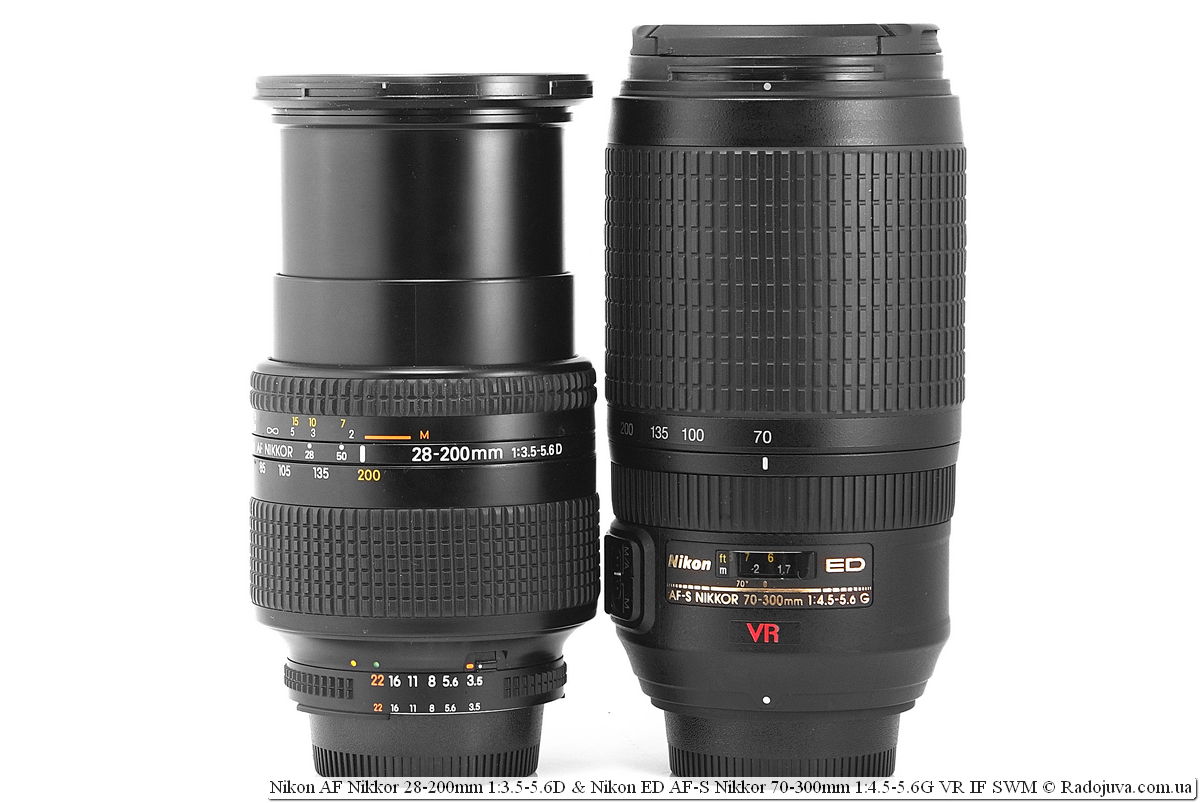
dimensions Nikon AF Nikkor 28-200mm 1: 3.5-5.6D and Nikon ED AF-S Nikkor 70-300mm 1: 4.5-5.6G VR IF SWM
Results
Nikon 70-300 VR is a good telephoto lens, the best of its kind. Perfect for Nikon FX and Nikon DX cameras.
UPDATE: On July 11, 2017, a replacement for this lens was introduced in the face Nikon VR ED AF-P NIKKOR 70-300mm 1: 4.5-5.6E.
Material prepared Arkady Shapoval. Training/Consultations | Youtube | Facebook | Instagram | Twitter | Telegram

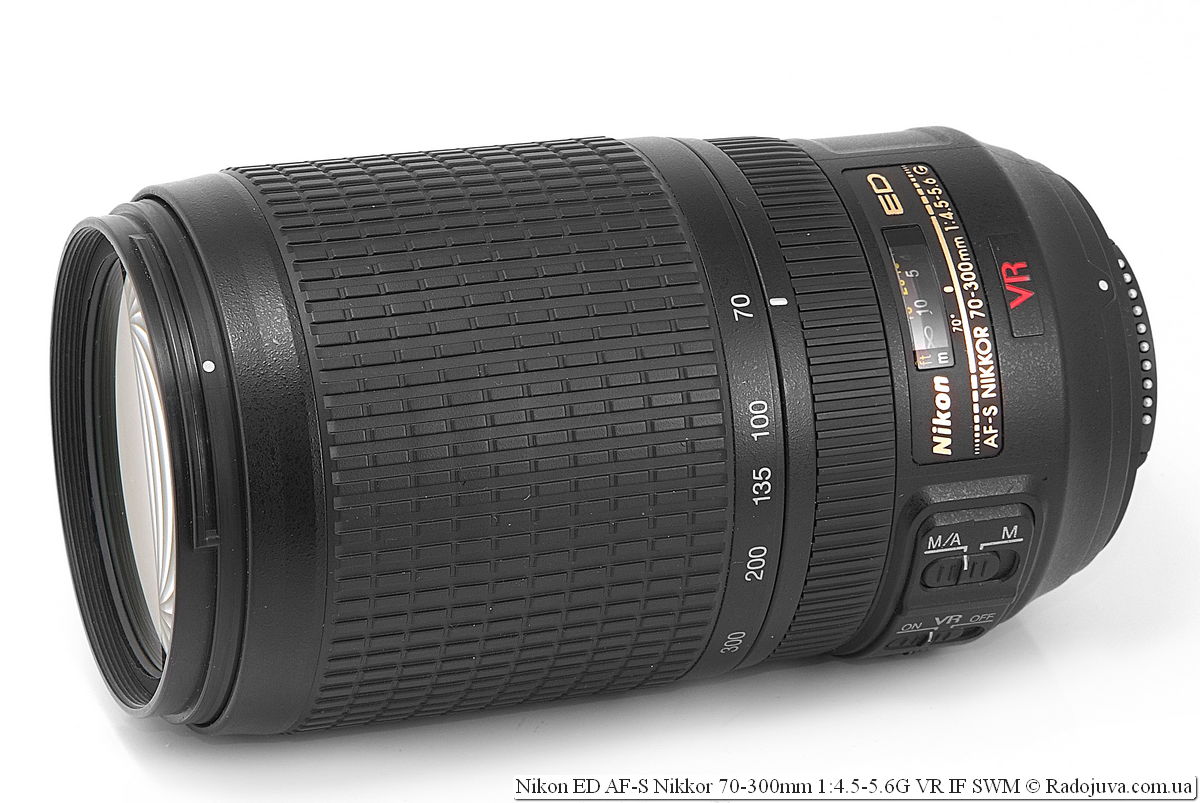
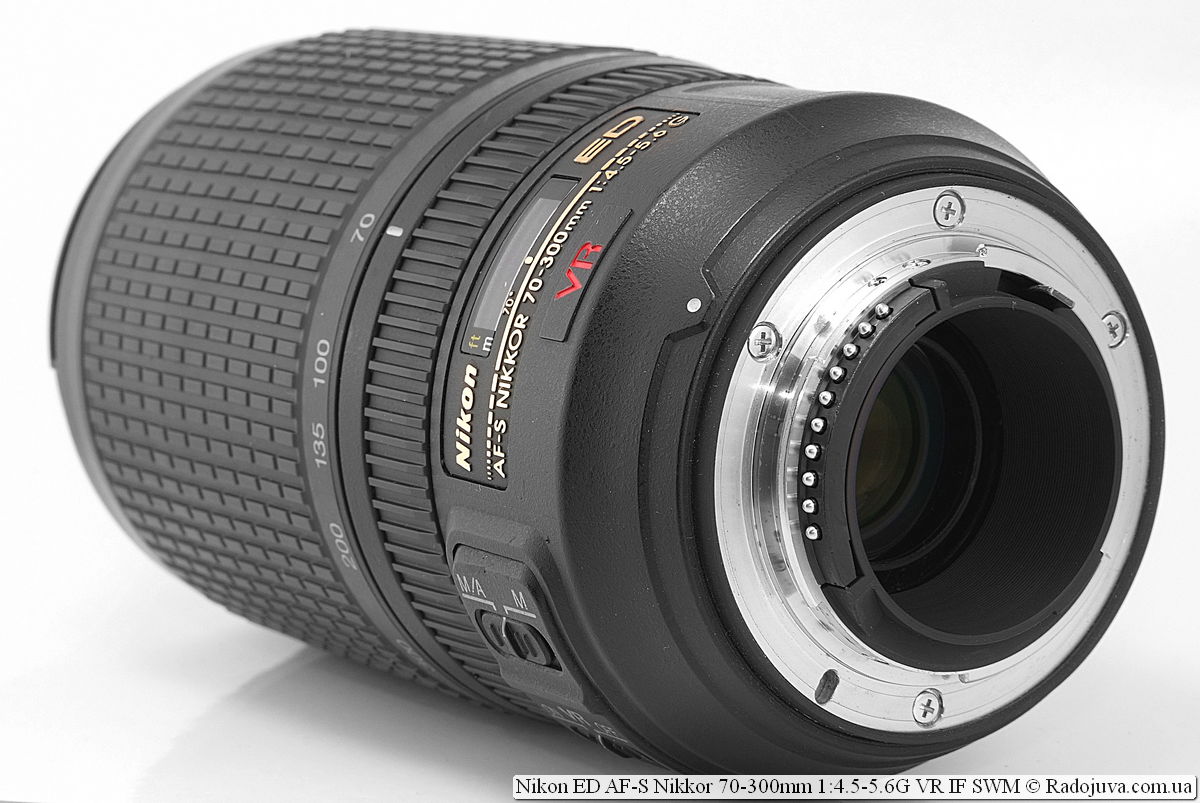
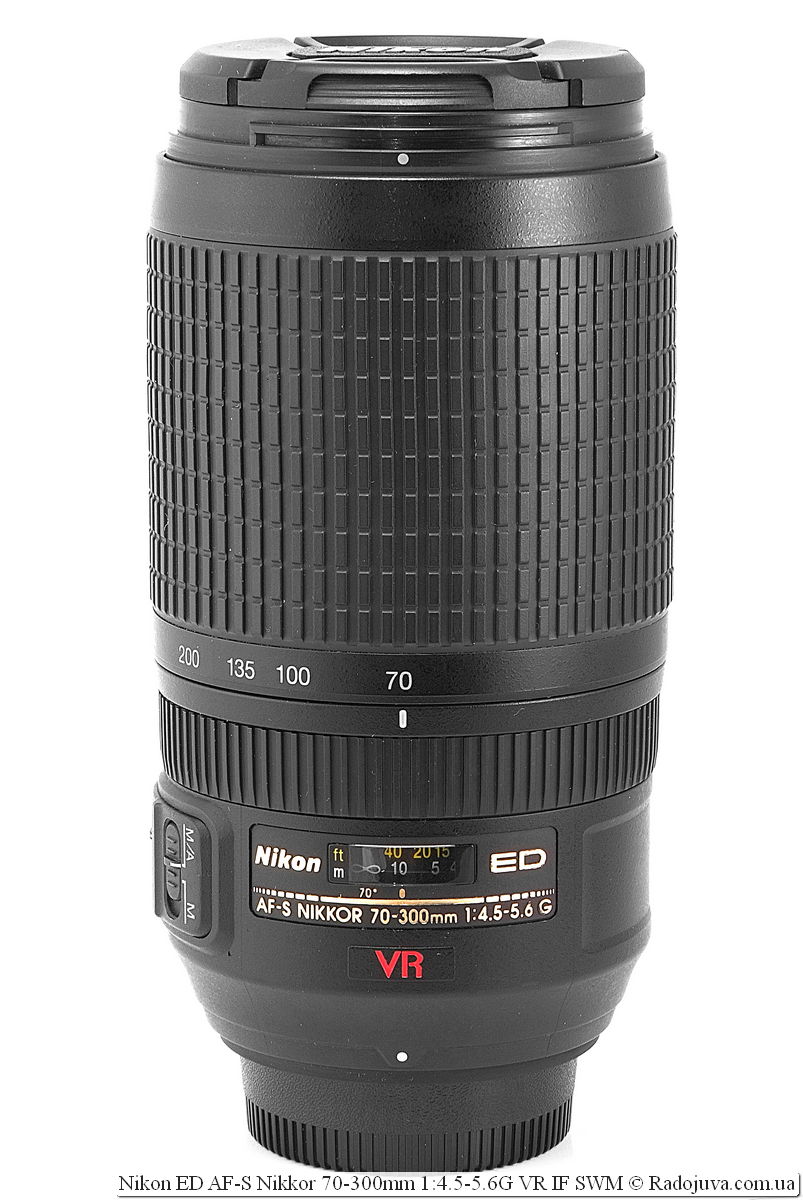
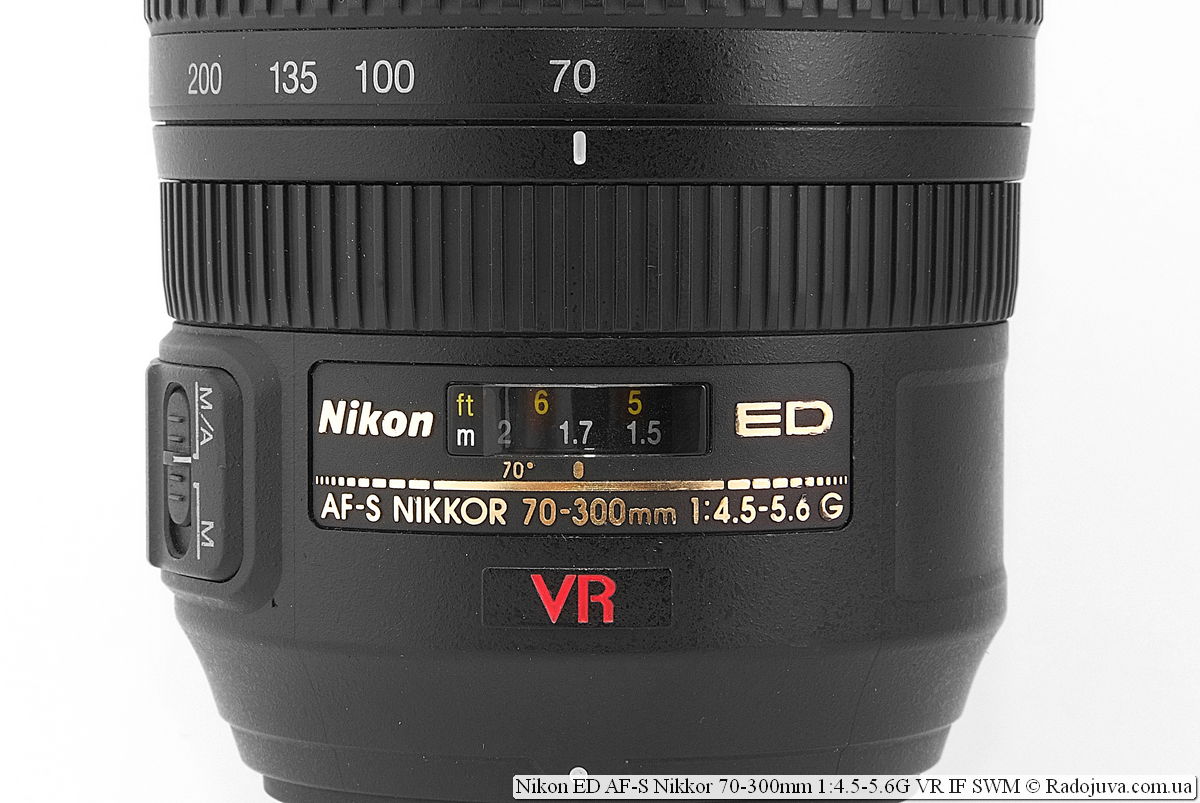
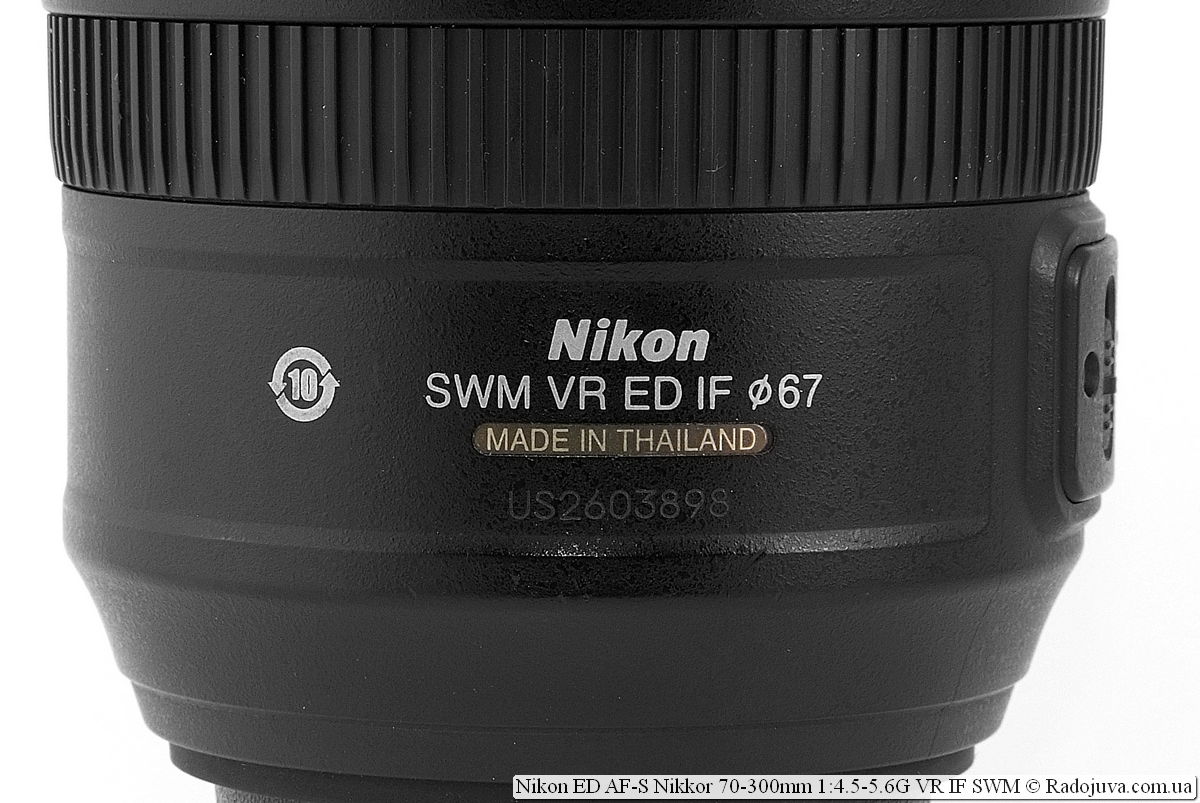
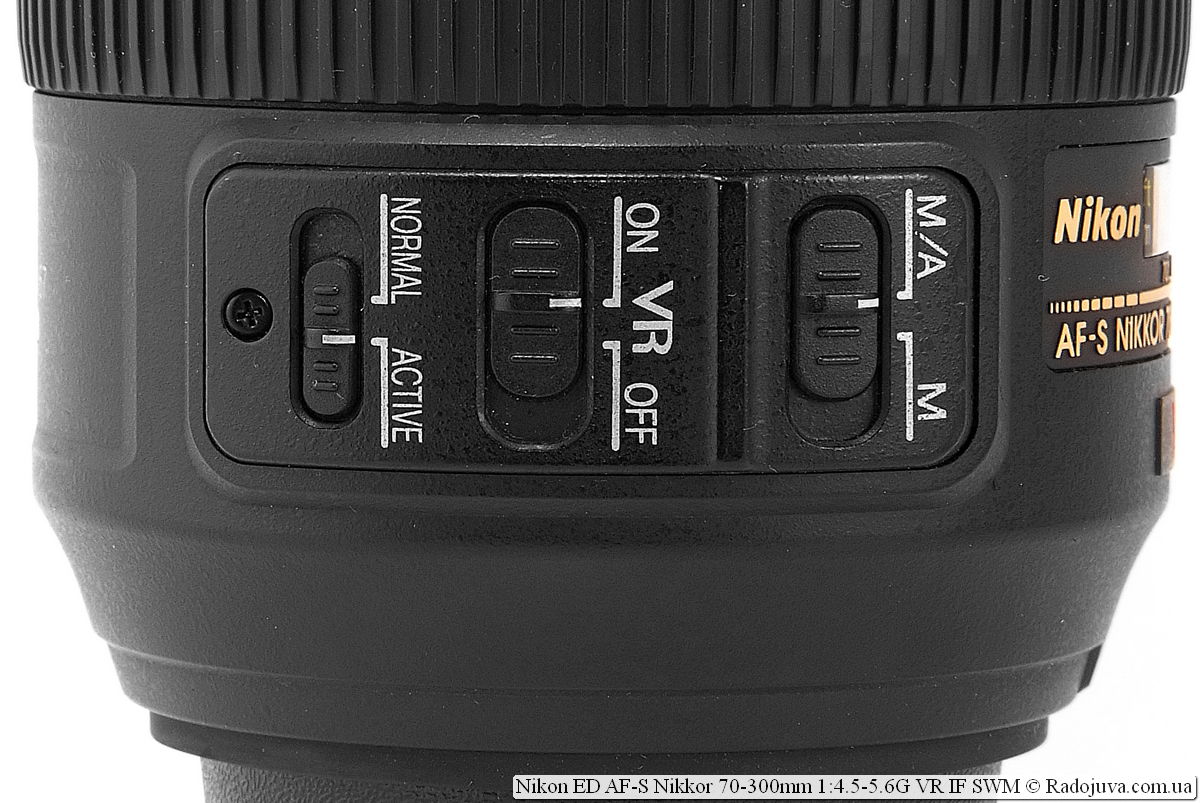
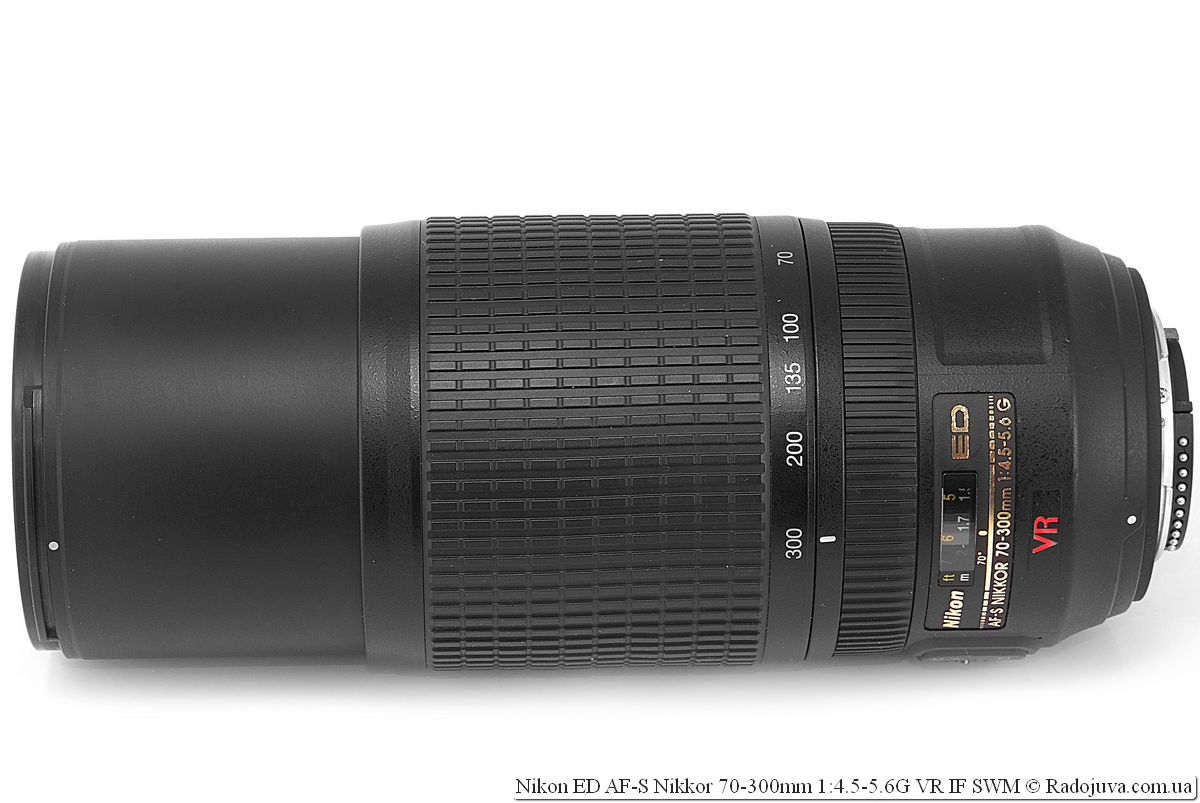
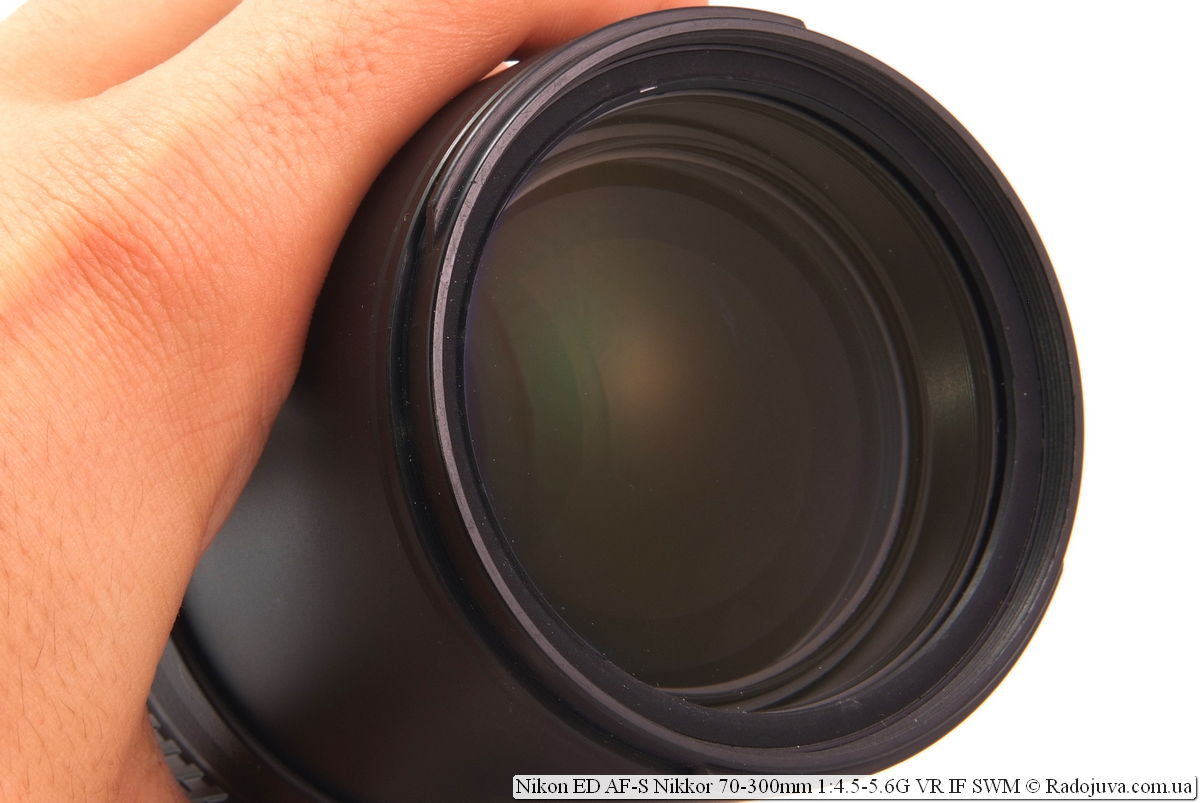
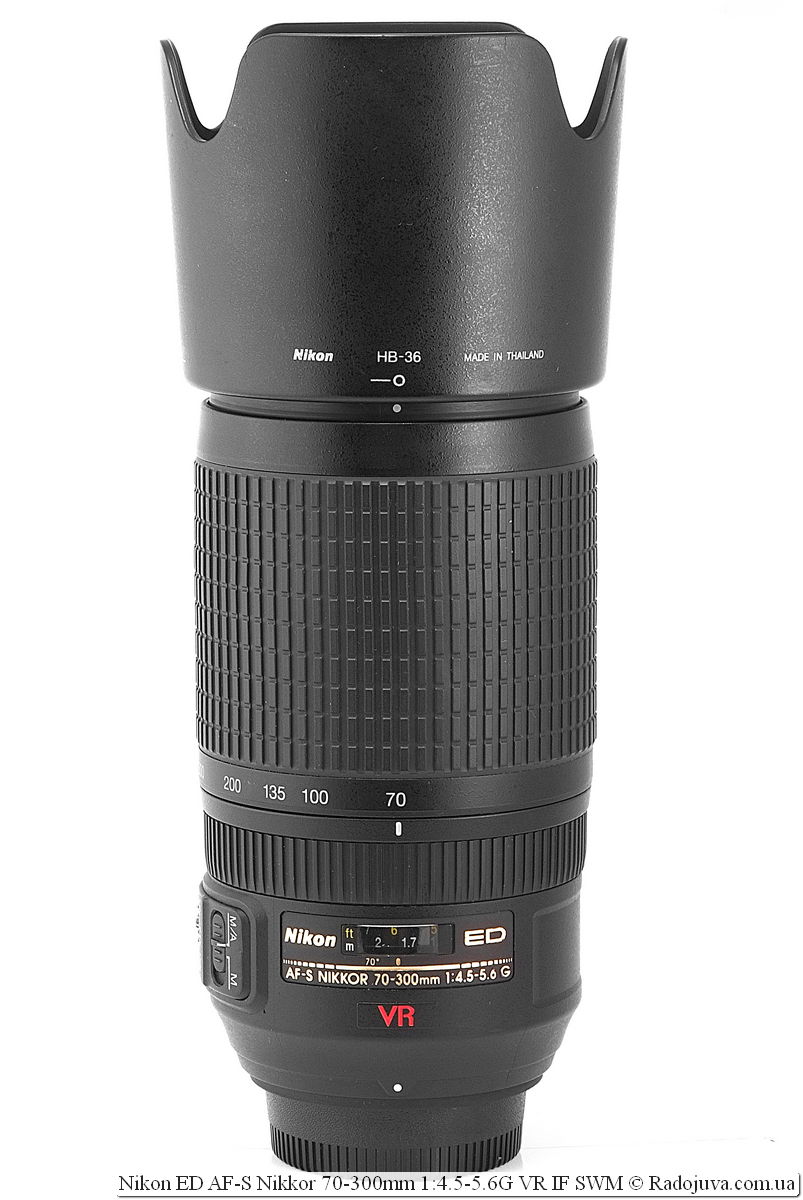


























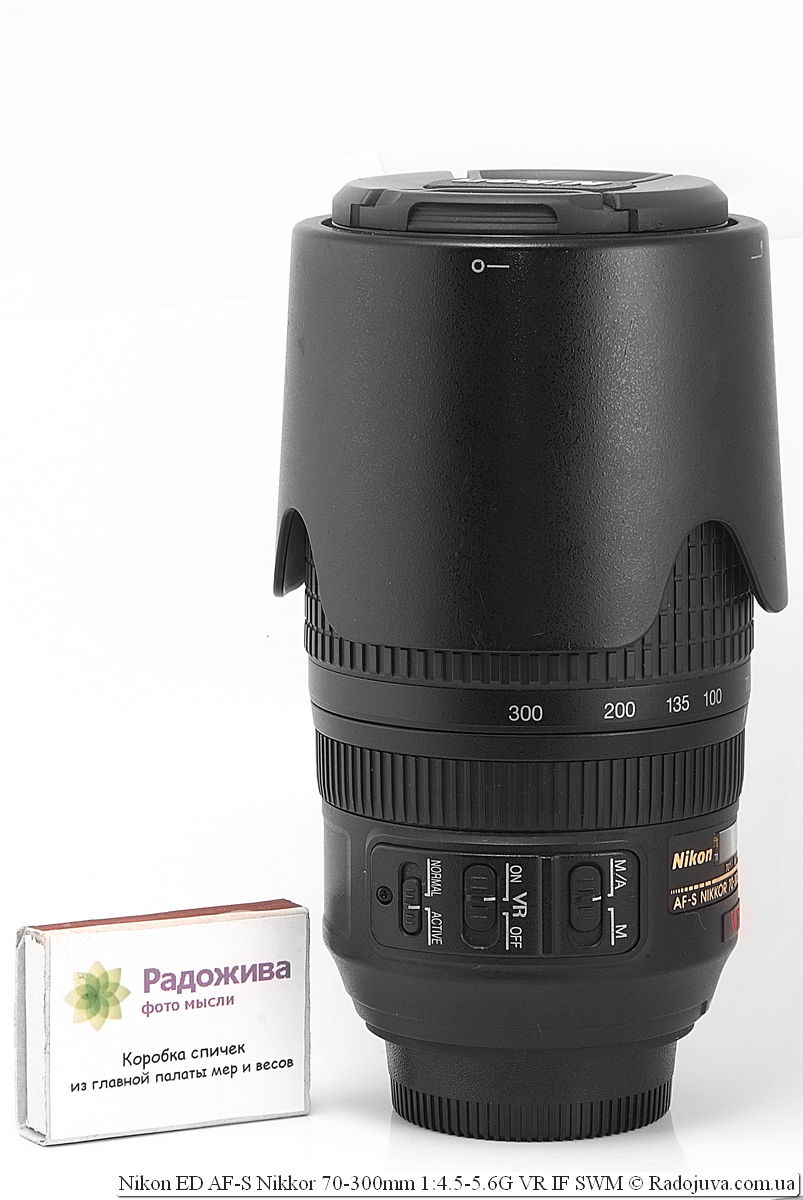
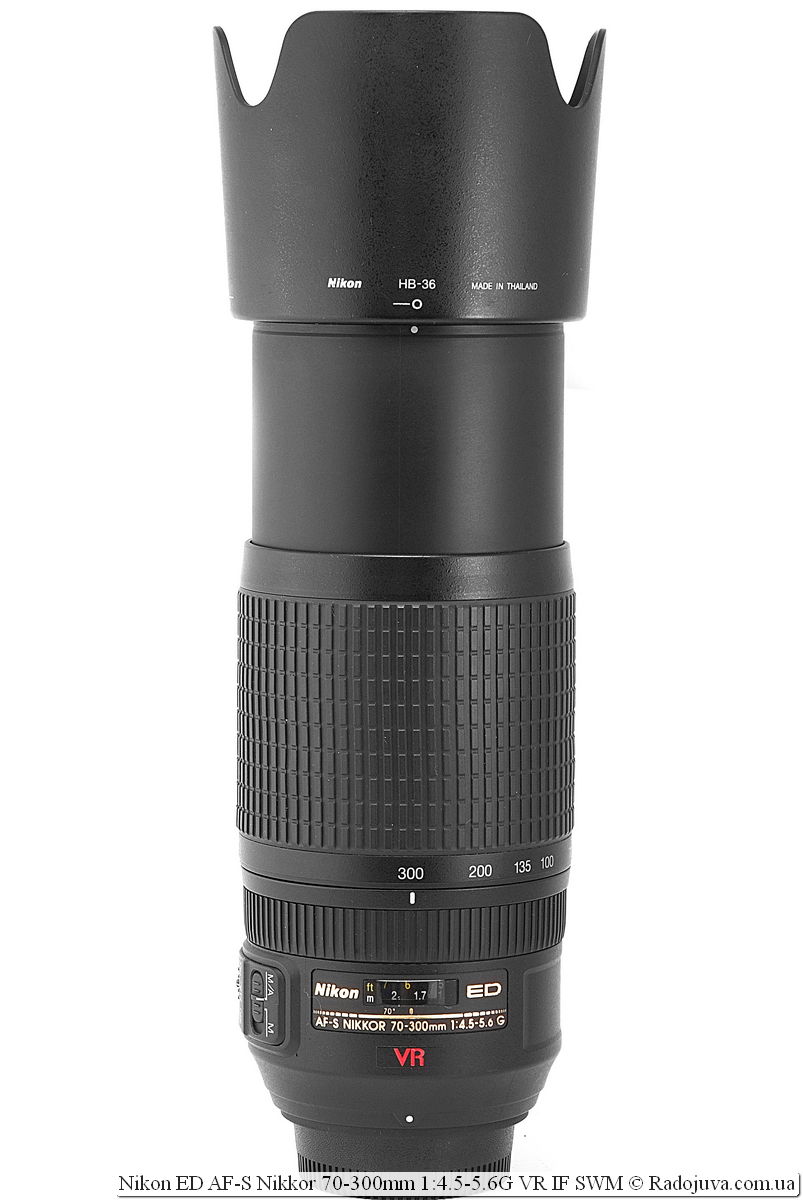
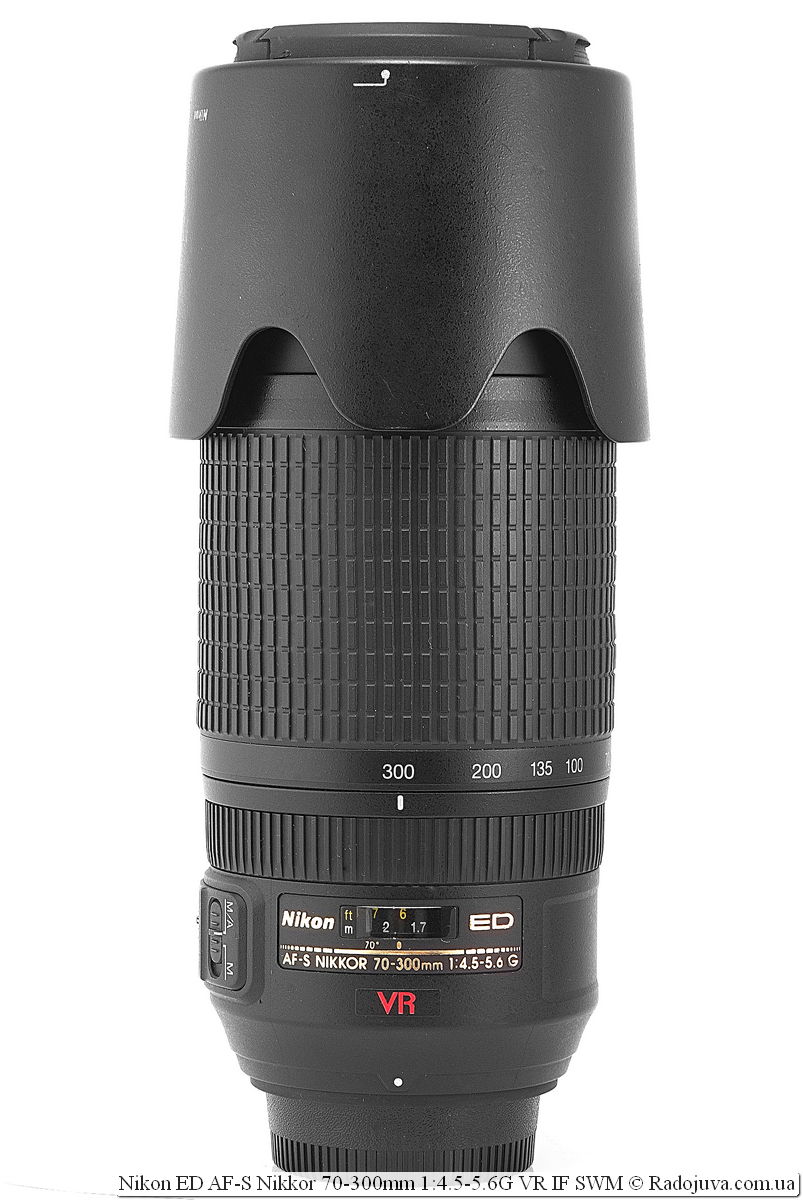
















Thank you, judging by the review, the lens is simply gorgeous
The lens is really wonderful!
No wonder he won first place: https://buynbest.ru/luchshij-teleobektiv-nikon/
The stabilizer helps out. and at the same time will remain for the future if you decide to take a full frame
Thanks for the review)))
I considered this lens when choosing a telephoto and eventually settled on the Nikkor 55-300, the price is more attractive, and I do not plan to switch to a full-size matrix.
And how 55-300 still use it, I ask because of such interest in it as a TV range + budget.
typo "prop factor"
corrected
Is there autofocus there?
I bought Sigma AF 70-300mm F4.0-5.6 DG MACRO for 950 UAH with my hands completely new and happy as an elephant :)))))
let potest)
sold out :)
I bought 70-300 VR from my hands, traces of disassembly are visible, it works like a clock, but sometimes autofocus twitches strongly on the AF close to 299mm. At the maximum 300mm - no problem. I did not find any patterns. They say that it is buggy on cropped cameras. Especially on D5100 (my camera).
At 300mm, it was never possible to achieve good quality. Up to 200mm - just a hurricane, how sharp!
Autofocus is also a hurricane. Had 55-300mm - cannot be compared
I have a Tamron 70-300mm F / 4.0-5.6 Di LD Macro 1: 2 I took a new one for 1600gr. In general, I am satisfied. There is no stab but there is a macro. On a long one, it is not as sharp as Nikon. The truth is I didn’t like the way I was chirping, flying with a diaphragm. Portraits are very nice, but with birds it’s more difficult. Macro mode is not even superfluous, with 180-300mm focal length, 95cm minimum distance to the object. At Tamron, the car focus is under the screwdriver on the carcass.
Now I choose an objective, which advise in the price category up to 12 thousand rubles
A question from a row which car to buy. Please indicate at least the purpose of use and try to suggest.
WITHOUT VR it is difficult, though ………… but it’s very cheap and not bad, with the transition to full frame (WE DO NOT SELL IT) we shoot even better. …… when buying, take a test in the store, or just rent an hour ,,,,, you will be satisfied ...
Tamron 70-300 has a generally beautiful picture. picturesque. However, a very noticeable chromatic aberration: purple border. When shooting in open landscapes, this spoils the pictures. Can. of course, to suppress the border in editors, but this is not the case! In addition, the construct is rather weak: after a year of operation, the trunk began to "go out". However, what can you expect from a $ 200 lens! He works out his money 150 percent!
Tell me please, the picture quality of this lens will be better than the whale Nikon 18-55mm f / 3.5-5.6G AF-S VR DX? Thank you in advance.
Yes, it will be better.
And what could you say about Nikkor 80-400?
An excellent device, there is still no version update. For your money - a great option.
so it’s been updated like recently
That's just my comment was in 2012.
:) sorry, I thought this was a fresh review
Hello! I need help, I hope for yours :)
I want to buy a new lens, there is a catastrophic lack of zoom for street photography (landscape, people). I concluded that for the landscape, this lens is really great! What about portraiture? Suitable lens? Or is it to opt for something else, perhaps an even simpler option?
Still thinking about fifty dollars ..
Shooting is amateur.
I would be grateful for any advice.
This 70-300 is a good portrait. For a landscape it can be too long (far to go far). Fifty should also be in the set, as it has a very large aperture.
Hello. I often take pictures of my children at concerts, morning performances, etc. (my children are very talented))))) Will such a lens work because it lacks aperture?
I am not a pro, I don’t earn money on photos and I don’t intend to ... For a middle-class fan, can you advise something else?
For indoor concerts, this Nikkor does not have sufficient luminosity. For open air during the day it may be suitable. I would recommend something more versatile, like 18-105, 18-200 - they are also "dark" but comfortable to use. There is also one cheap high-aperture universal option - Tamron 28-75. If you wrote at what distance you most often shoot, you would probably be more accurate.
I have a question, what is better sigma 70-200 2.8 without a stub or better Nikon 70-300mm f4.5-5.6G with a stub? those. let's say at 200mm what minimum shutter speed should be on an open aperture.
These are different lenses. I didn't use Sigma - I can't say anything. Regarding exposure, sigma at 200mm should be at least 1/200. Nikon 300mm with stub on must be at least 1/60. But keep in mind that the difference in aperture is 4 times (the stabilizer guarantees the same number of stops). I advise my article on how to take pictures with hands.
Good day. First of all, thanks for your work!; In fact, very high-quality articles and reviews!
And now to the point, you need your advice on buying a glass:
Is there a Nikon 70-300mm f 4.5-5.6G IF-ED AF-S without VR or for the same money Nikon 55-200mm f / 4-5.6G IF-ED AF-S VR DX- what to look for? (Article how I read photographs with my hands, as well as a review of my carcass nikon d5100, which in your review at high iso would probably compensate for VR)
or still add and buy NIKKOR AF-S 55-300mm f / 4.5-5.6G DX ED VR
Thanks. 70-300 VR is a very high quality lens. 70-300 old - haven't tried it. You can safely take the 55-200 VR, it will be quite enough for basic tasks, and it is inexpensive.
Hello everybody …
I want to buy a lens for my camera, advise which one is better
Nikkor AF 70-300mm f / 4-5.6G Black
or
Sigma 70-300 mm f4-5.6 DG Macro for Nikon
thank you in advance
This native Nikon is very good. I have not encountered such a Sigma, I can not say anything for it.
By the way, he will approach Nikon D3100 (my camera) and everything will work ??
and another question)
I want a stofilter to the lens only there are a lot of them and all are different which is the most necessary for a start
Arkady thank you very much for helping us =))
In paragraph 4, I pointed out that the lens can be used on all modern Nikon cameras, everything will work.
First, look towards the protective filter.
and more
there are 2 lenses with which I can’t decide which one to buy myself. I have a camera (Nikon D3100)
((Nikkor AF 70-300mm f / 4-5.6G Black)) and ((Sigma 70-300 mm f4-5.6 DG Macro for Nikon))
tell me what will work better with my camera and the difference between them is what one has for example (G) and the other (DG)
thank you in advance I'm waiting for an answer from the board .. you can write off the soap rony-29@mail.ru
For Nikon lens designations, see the Screwdriver section. About the designations of other manufacturers - https://radojuva.com.ua/2012/03/different-lens-main/
no sigma and other things should be compared with branded optics, especially for such money. it definitely won’t be better. and 55-300 what? In dynamics, how to shoot it ??? Flying birds, auto sport, rally for example? Just something unhurried.
What is better nikon D3200 VR or DX? Please advise!
I can not answer. The question does not make sense. To correctly formulate it, read the materials
by DX and FX cameras and lens designations
Great review, thanks, Arkady!
Only I slightly disagree on one point: the Tamron 70-300mm F4-5.6 Di VC USD lens still costs less than its native counterpart (in Moscow, in various stores - from 13 to 18). In review http://www.photozone.de/nikon_ff/619-tamron70300f456fx (True, on the example of a full-format matrix, which is not entirely correct, it is possible), the author estimates it slightly higher than the similar Nikkor 70-300. It’s a pity that you are not able to test the above glass, it would be interesting to compare 2 of these televisions ..
In confirmation of the namesake’s words: http://aflenses.ru/id/1521 They also write that Tamron SP 70-300mm F / 4-5.6 Di VC USD will be better than native, and the price is slightly lower
Oleg, quality is possible and comparable with branded optics, but autofocus is noticeably slower, I tried both. For dynamic scenes, sports, etc. Tamron will not do.
Thanks for the review. Bought this lens, very satisfied.
Thank you so much for a detailed, high-quality review of this lens. I have been looking at him for a long time. The decision to buy can be expressed with a sacramental phrase from a film about police operatives: "Let's take it!" :)
Do not forget about helping the project.
I did not understand, if you do not shoot indoors, is it worth taking without VR
There is also poor lighting on the street.
Arkady, hello. Tell me which lens for Nikon D5100 (kit Nikon 18-105mm f / 3.5-5.6G ED VR AF-S DX) is preferable (if possible why) Nikkor 55-300mm f / 4.5-5.6G AF-S DX VR or Nikon 70- 300mm f 4.5-5.6G IF-ED AF-S VR. The lens is needed for photo hunting. I’m not going to switch to the full format yet. Thank you for your work.
55-300 has a wider viewing angle, and 70-300 will give a smaller vignette. If there is money, I would take 70-300, since this is a really good lens.
Konstantn, let me answer you (Arkady, you won't be offended, I hope). There are many reasons why a 70-300 is almost twice as expensive as a 55-300 (at first I thought that they got sick there in Nikon :) and they sell much “better fur” cheaper). 1. 77-300 will work, as Arkady wrote, and on full-format cameras. 2. The front lens rotates at 55-300 when focusing. 3. The focusing motor on the 55-300 is NOT a ring type as on the 70-300, which allows you to adjust the focus by the knobs at 70-300, and the autofocus speed is higher and quieter. 4. Absence of a distance scale for 55-300. 5. At 70-300, the vibration suppression function is newer: there is also a switch to the active mode (when driving in a car, for example, or by a helicopter (I would like to try)). Well, and the last, (rather controversial as some will say) statement about a better product in the case of 70-300, in principle, which is confirmed not only by the price, but also by the weight of 745 g for 70-300 versus 530 g for 55-300. For me, arguments are enough.
Thanks for the bright thoughts :)